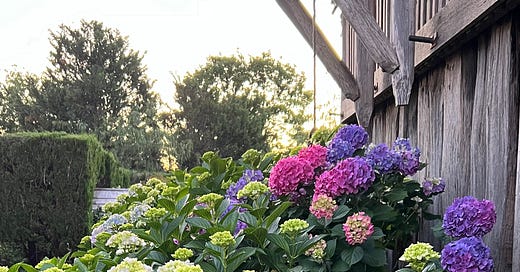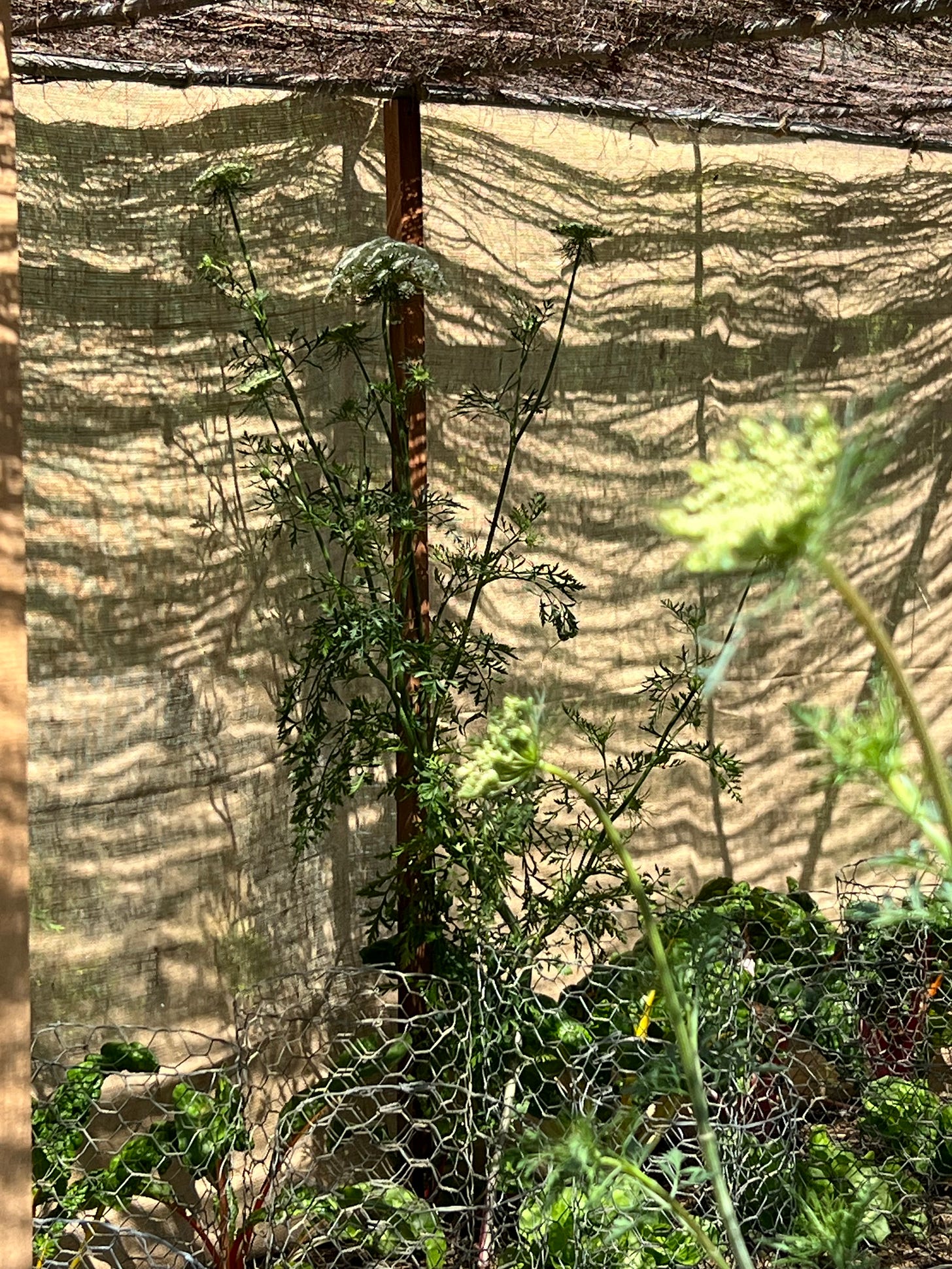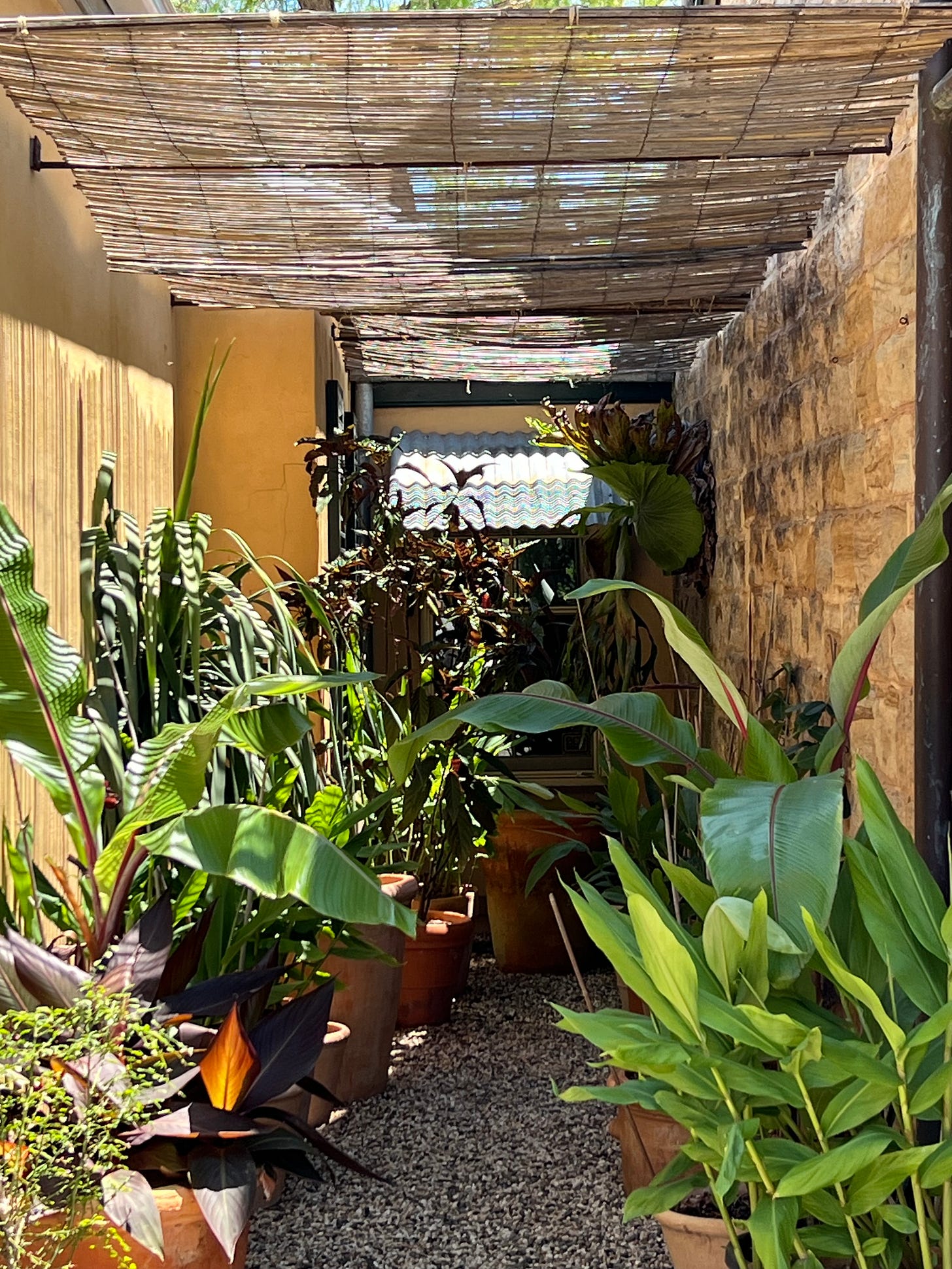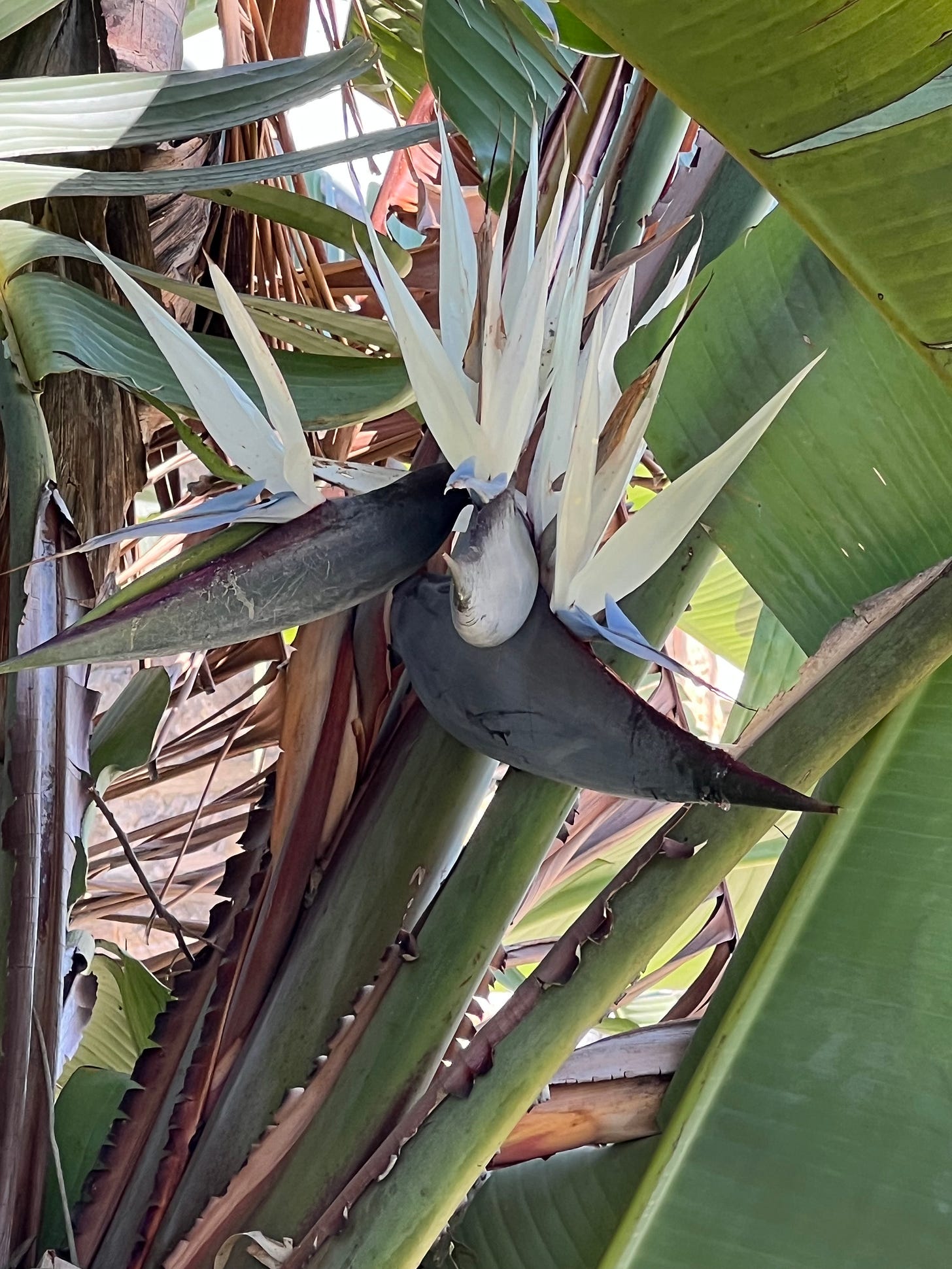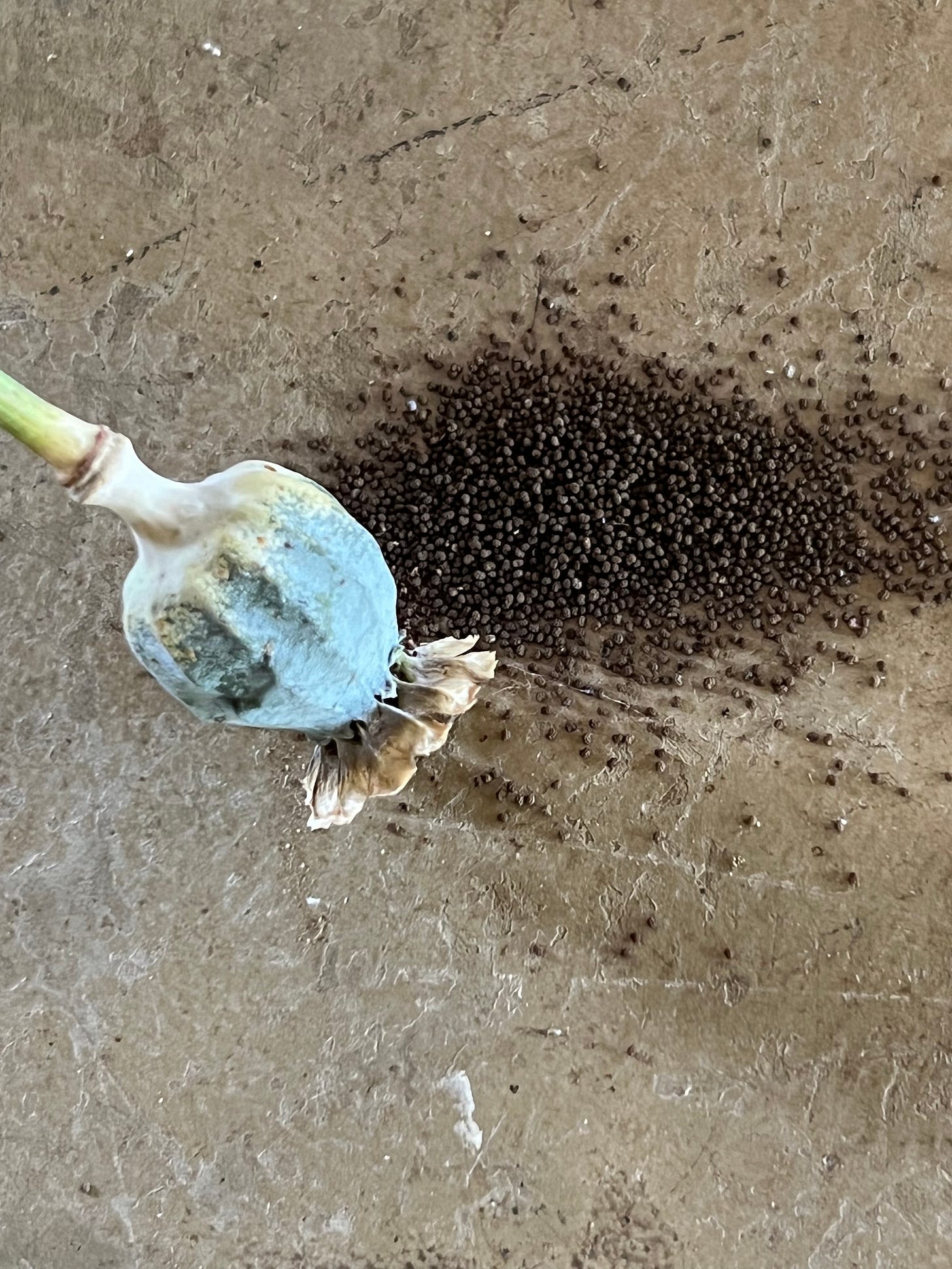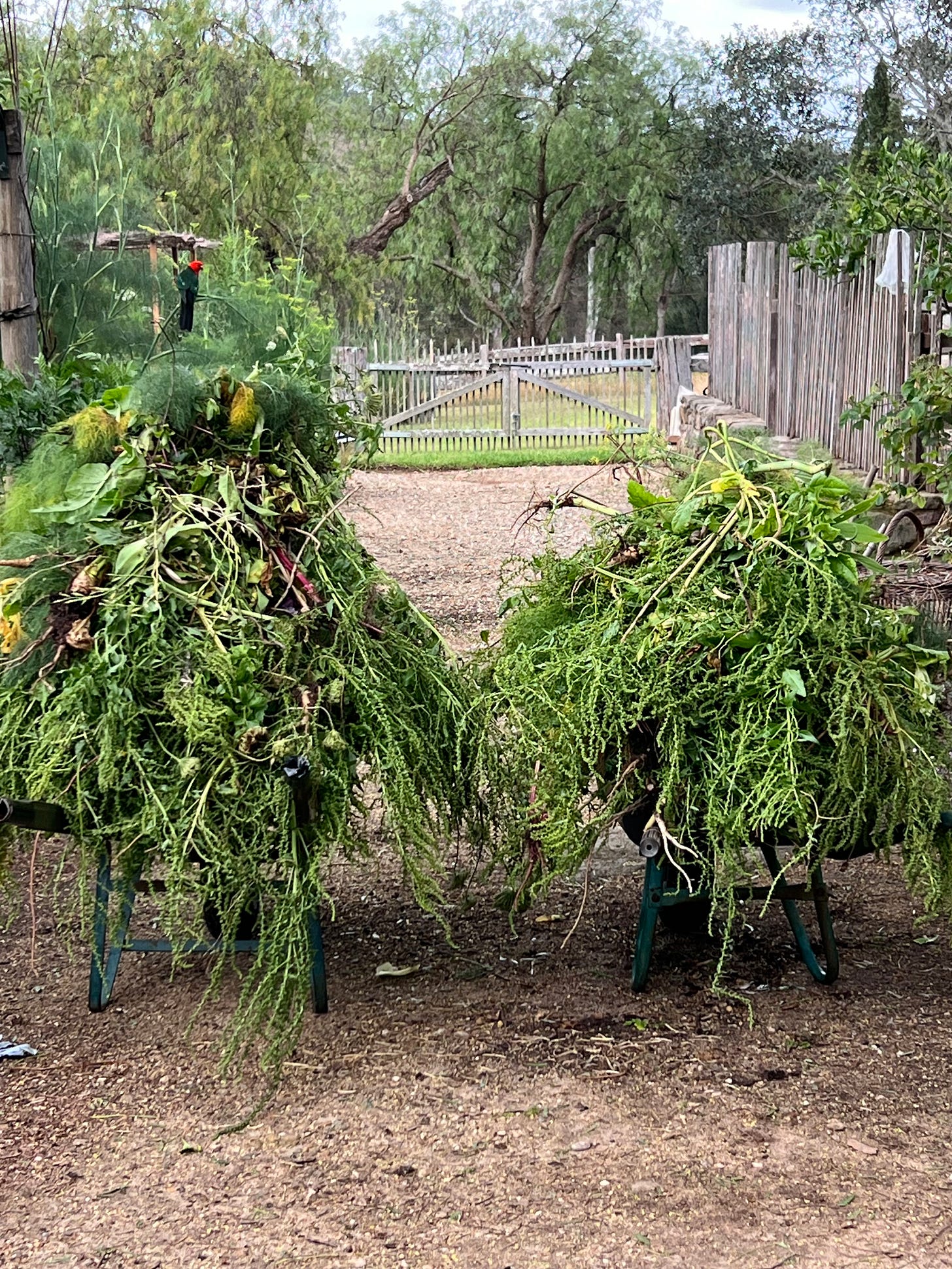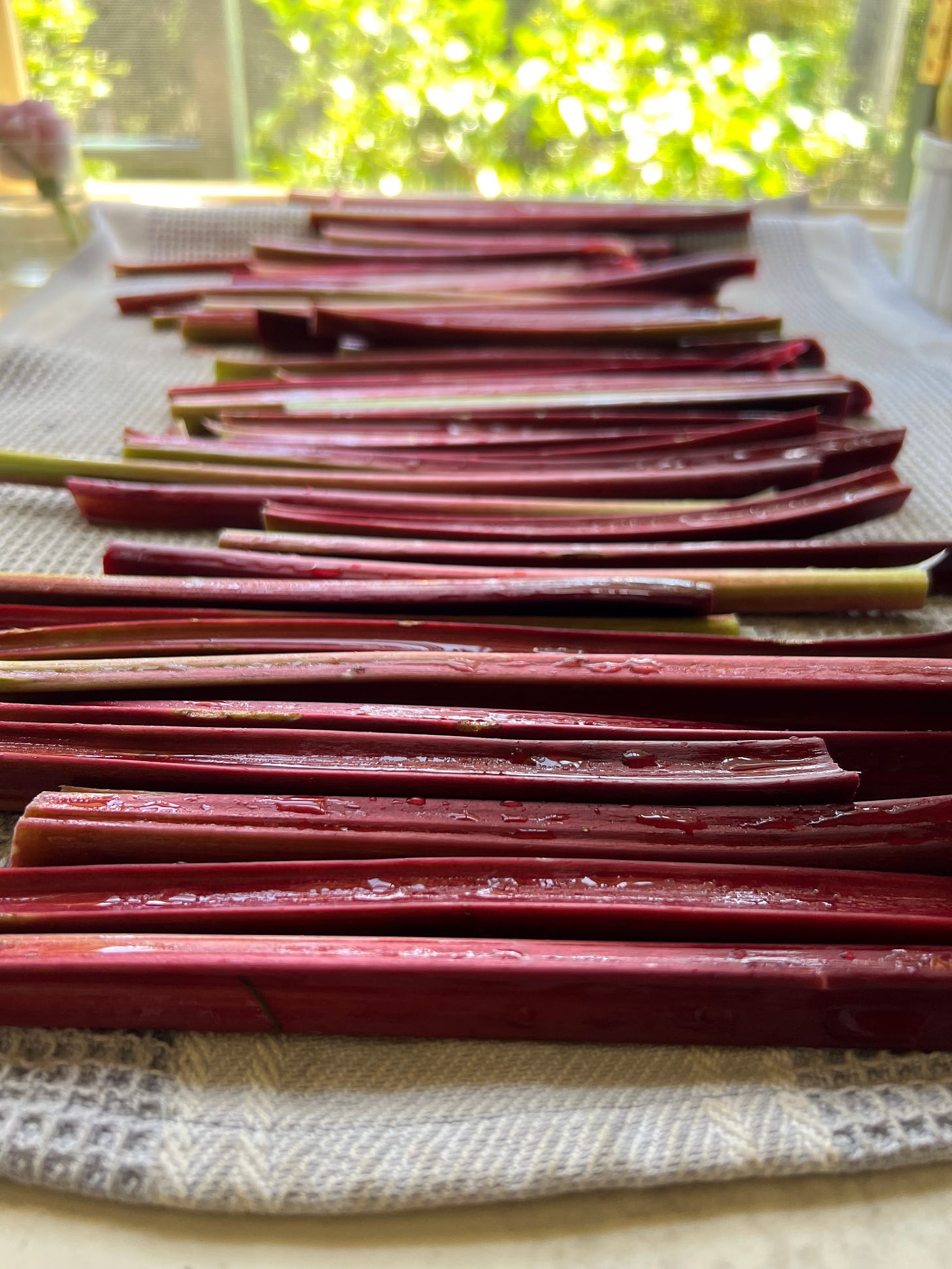The queen of makeshift strikes again!
Boy last week is so last week! I’ve mentioned before that November is a month of shifting parts, and I’m thinking to liken each week to driving a manual car: during week one we may have ratcheted up to through the gears to fourth, but then pulled quickly back down again to second. Week two may have stalled in neutral, then last week’s building storms saw us gliding into fifth, before the chill set in and plant life skulked back down into third, though champing at the bit to shift into fourth each time the sun peeped through. Well this morning we slid quickly into fifth gear and began racing into sixth…I’m puffing and panting in my effort to keep up! (Yes, I drive a manual and we’ll save all that for another day!). I feel like I’ve driven the grand prix and am exhausted before we even begin!
I had no intention of leading with this image today (or indeed this narrative!). I thought I had another few days up my sleeve, with all but the half dozen flowers leading the pack still held in tight bud, and that the ‘hydrangea story’ could arrive next post around. It’s not as if yesterday was hot…in fact it was rather dull, but by yesterday evening, shape and incoming hydrangea colour literally stopped me in my tracks, for it’s this ephemeral moment when the hydrangeas are fresh faced and new, shy yet of which colour to bloom (which is another long story I’ll save for another day as the week will come when there’s not quite so much to relay!). Though I rejoiced in their beauty in the fading light of a clear, apricot tinted sky, the first star winking overhead, in the pit of my stomach I knew that this morning I’d need to act…fast.
The above image is likely the only unencumbered one we’ll see this season, as with a heatwave predicted in the coming days…37C - 39C…really Mr ABC weather man? I just can’t leave them exposed! Although they nominally face south…kind of…at this time of year and throughout the summer, the sun is so high and its arc so wide, it clips their edges at each end of the day and blasts them overhead too, despite the height of the old Barn against which they’re planted.
So this morning the queen of makeshift (not a title I’m proud of - how I wish I was more competent than I am) got to work in a panic. I had not intended to tell you any of this today, but now we’re here, how annoyed I am at myself! I’ve known full well all year, that I needed to act in preparation for this very moment, but now it’s arrived and I haven’t done as intended. Which is why, instead of calmly erecting a professionally sewn length of canvas to what would resemble a quite cohesive tent-like structure (although I know it would still be a faff and no-one is likely to help me in this endeavour because it is a problem entirely of my own imagination) I’ve been poorly piecing together sections of hessian (again…just as I did last year) with my little brother’s old nappy pins!
You see it’s only last year that I hatched this tent-like plan for protecting the hydrangeas from the fierce summer sun. For years I’ve struggled with how to implement some kind of makeshift shade and up ‘til last I’ve manoeuvred a pair of umbrellas around…pretty oriental parasols once upon a time, that sadly blew over so many times in the wind that I had to give them up and instead use a pair of market umbrellas, but they’re heavy to shift as the sun moves…and also hopeless if I’m not actually here to do so (I do need to go out from time to time!).
Although the plan I devised to protect these flowers I so adore is far from perfect, it did a reasonable job last year, even if I didn’t ever complete ‘stitching’ rod pockets with string as intended and in a panic then, as today, held the entire thing together with said nappy pins! (And why, I ask you…are my brother’s old nappy pins even in my sewing basket? How did they get there? Why aren’t they in my mother’s? But oh how very glad I am, that I did indeed discover them in mine last year when I first went through this rigmarole with newly made steel rods!)
For here is the current situation!
As the day progresses the creases will ease out of the hessian - I left the one section I did sew last year with its rod still inserted, as a reminder (or template to show my lovely curtain maker Nathalie who I know will not be overly amused with my idea either!) and of course the whole of it got shoved to the back of the potting shed where it’s been twisted up since January.
Despite my endeavours, it’s inevitable the flowers will burn - in severe heat it isn’t even the sun that causes them to scorch and burn, but the sheer heat of the day itself. So all I can do…is try to keep them looking beautiful…’til Christmas. After that I don’t mind so much, but I do so love hydrangeas for Christmas day! So fingers crossed.
I know the entire ‘tent effect’ will work beautifully when I do get Nat to make the real thing - even when I get this version properly erected instead of this morning’s panic, it’s quite magical. But that will be for when I don’t have a day’s writing ahead!
While I’m on this tangent though…I’m sure I’m not the only one thinking of shade at this moment in time. I cannot abide actual ‘shade cloth’. Sure…in a commercial nursery for practicality’s sake, but not in a domestic garden - at least if aesthetic is…well…your thing. And it is mine. Any materials other than those that are organic look completely out of place here, so I’m always trying to come up with solutions that are simple, old-fashioned, practical…and that I can do myself!
Canvas, willow, bamboo and hessian are all favourite materials that I implement for various temporary measures. Whilst a particular brown canvas is saved for more ‘special’ jobs, hessian often makes for the quickest solution and is certainly easiest to erect with pretty fabulous results. It’s too easy to cut a hole in hessian and slip a length over a rod of bamboo…for a flat panel. If I didn’t implement exactly that solution to the westerly aspect of this year’s ‘leafy green’ bed (above), the coloured chard and lettuces would bake to a crisp. It creates another world…rather like a cubby house for the plants and on a hot day, working in that space is a really lovely spot to be…even for a human! Another solution, depending on what I have stored in the potting shed, is to roll out panels of willow or bamboo that are easily tied onto tomato stakes with lengths of string, creating instant dappled light.
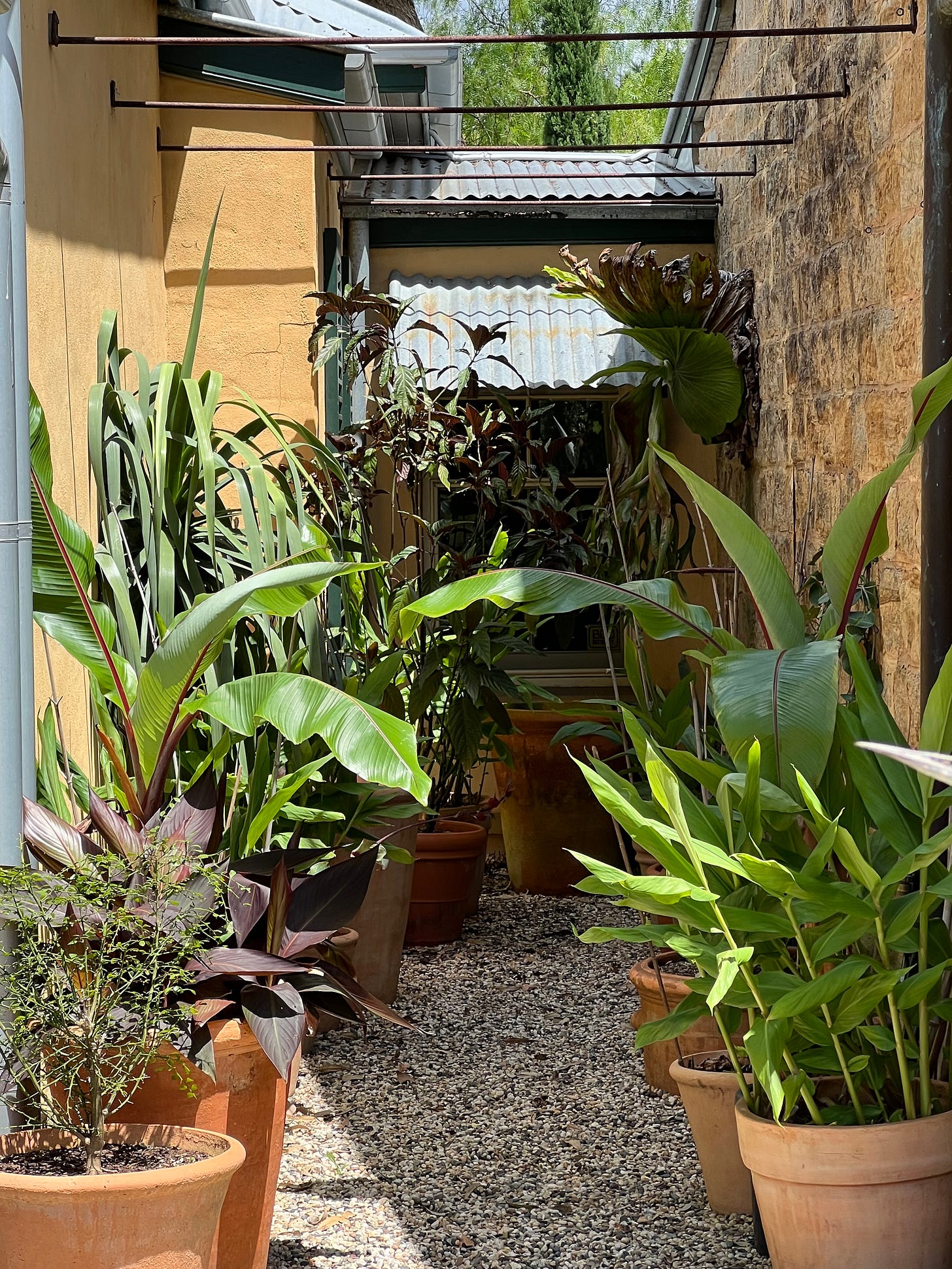
While those quick fixes suit the aesthetic of the kitchen garden, around the house requires rather more sensibility. One particular spot that requires a huge effort at this time of year, is perhaps the least favourite annual job that Thalia and I tackle together (and one we completed this week - yay..it’s done!).
‘Between the wings’ as we refer to this little pocket between the old house and the offset bedroom pavilion, is where a collection of terracotta pots hold tropicals that I’d be unlikely to grow elsewhere in the garden. During the winter months, we need all the sun we can get to warm the walls of the house and penetrate through the windows, and when most of the plants are in their dormant stage, winter sun does them no harm.
But once the heat is on, it’s a whole other story and so…this was the week to get ahead of the predictions! One ladder, two women, three rolls of split-bamboo, a ball of string and…ta-da….
Again it’s not perfect. It’s makeshift, which gives it character. The split bamboo panels create a beautiful dappled light that even standing on the ladder, as each roll is unfurled (we balance precariously, sharing the weight and passing pieces of string to each other through the chinks in the slats!), makes the most enormous difference to the space - which all at once one feels enclosed, protected and you can almost feel the plants relaxing with each panel pulled taut. Now, two days on and the sun bright as bright can be, an air of romance lurks between the wings, that will only be heightened as summer ensues, as buds swell and eventually spill intoxicating perfumes through open windows.
Erecting structures like these puts me in mind of countries that do shade well…afterall, they’ve been doing it for millenia. In Italy, Spain, Greece, Morocco…you’re likely to find canvas-filled colonnades, or panels slung building to building over city pavements. Pergolas (if not adorned with grapes, bougainvillea or canvas) are likely covered with some kind of local, twiggy material, or woven rush put to use - whether on horizontal or vertical planes. Looking at shade structures has long been a favourite interest on our travels, as how light plays in a hot climate, whether in interiors or gardens, is something that fascinates me.
While we’re at the front of the house and thinking tropicals, the enormous beak-like buds of Strelitzia nicolai opened last week. They did so in secret and I didn’t notice until Sunday morning, when Larry opened the curtains and I didn’t immediately hop out of bed; instead gazing out the windows in the knowledge I didn’t need to water as we’d had a shower of rain the evening before - how glorious. It was then I became aware of movement beyond the window, and watched a Rainbow Lorikeet busying itself so deep in the beak of the flower directly in my view, I couldn’t decide if it was gathering something to eat or having a bath! With the prising open though, of these tough, deep purple buds that from some angles resemble Pacific Island canoes, we know that summer is just around the corner.
Last week I mentioned the long buds of the Burmese honeysuckle, Lonicera hildebrandiana forming, and oh how they enjoyed the downpours! All in an instant, the stressed out yellow leaves that had clung all early spring fell to the ground, and fine golden trumpets released a sea of perfume that swathes us now, spilling and swirling all around. I swear it’s greeting me on the verandah as I approach from the opposite direction, via inside, through the open kitchen door!
Mingling with the aroma of beetroot baking in the oven, chicken broth simmering on the cooktop and apricot jam on a rolling boil, it feels as if all of summer has arrived at once - just a week or so early!
Speaking of apricot jam, if you’re thinking to make a batch, now is the moment! I’m always amazed if I produce even one edible fruit and am beyond thrilled to have picked over half a kilo! They are far from perfect - some are bruised and split in the rain, over-ripe, under-ripe…but there were a few that were just perfect. So you know where those went! Is there anything like an apricot picked straight from the tree?
As many years have gone by where there have been none (this year I was so very careful to bag every tiny fruit immediately after pollination, though that doesn’t necessarily mean it will work) I can claim to be no expert when it comes to apricot jam, though the one year I did make it, it was so sublime I’ve long banned my friend from taking the last jar from the cellar! I’m not sure the batch I made last night will equal that one, which was apricot jam like I’ve never encountered…and what did I do with that recipe? There’s no sign of it anywhere, though I know it wasn’t fancy, which is probably why I didn’t make any note of it!
I do know I didn’t remove the skins. I like seeing the motley imperfections. In the name of not sending you misinformation, I’ve just dipped a teaspoon into the jar that didn’t quite fill to the top…and that we will almost certainly launch into for this Sunday’s breakfast. And can report that mm…mmmmm…it’s pretty damn good! In fact YUM! So…here you go (which means I’ll have it recorded for posterity too!) but now I have sticky fingers and computer keys…oh dear:
APRICOT JAM
Ingredients
1 kilo fruit (I only had 800g)
1 kilo white sugar (sugar should equal fruit in weight so just go with whatever the weight is you have of fruit after you’ve halved and removed the stones). I only used 700g sugar…as if leaving out 100g is likely to make any difference to my horror at the amount!
Juice of 1 lemon (I used half…of a big lemon but this jam does need the pectin from a lemon to encourage it to ‘set’) and apparently including some under-ripe fruit also helps though that said, I don’t like overly ‘set’ jam…
Method
wash the fruit (even my organic ones have bits of leaf stuck to their skins)
halve, cut away any yucky bits and remove the stones
pop all the fruit into a saucepan with a lid and place onto a very low heat…to encourage the juices to drop which they will - I choose not to add water but keep a very close eye as you don’t want them to catch and burn
cook fruit down to a pulp, then add the sugar and lemon juice and give a thorough stir ‘til all the sugar has dissolved
put the lid back on, bring back to the boil then keep it bubbling ‘til the colour deepens and setting point is imminent - maybe 15 to 20 minutes. Give a vigorous stir from time to time…again, to make sure it’s not catching on the bottom
pop a saucer in the freezer for five minutes or so, then to check for setting point, pop a teaspoon of jam onto the cold plate. Leave for 20 seconds then run your finger through the middle of it….if it wrinkles and parts, you’re done
ladle into sterilized jars and screw on the lid. Tip upside down for a few minutes to seal
So there was a job I hadn’t intended to do yesterday! But it had to be done, right there and then…there was no time to lose or the fruit would have been lost…
Nor had I particularly intended to carry out a Rose Geranium distillation (it’s been one of those weeks!). But niggling away for months now, has been the nagging knowledge that I didn’t do a ‘sprinter’ Rose Geranium distillation as I usually do. I meant to…but there just wasn’t an opportune moment. As there’s a much wider window to distill this plant, I don’t feel (as I do with the Orange Blossom and the Damask Rose) that I must drop everything for the fleeting opportunity they present.
At the back of my mind also, has been the knowledge that this time last year, at a photography workshop I hosted for Lean Timms, I carried out a demonstration distillation purely for Lean’s purpose at her request. To my enormous surprise on that day, I collected a small amount of the most exquisite opalescent green essential oil! So part of me has been wondering if I could do it again, hence delaying. Although the weather pattern hasn’t been the same, one never can tell and I guess that therein, lies the magic of distillation.
Sadly this time, no floating blots of iridescent green came across, although the most intoxicating water certainly did! Wowsers! What a dreamy hour I enjoyed as Hildegard trickled and tinkled, filling several glass beakers with her bounty. I had filled her to absolute capacity as it’s the only Rose Geranium distillation I’ll take this year. It’s the first time this season I’ve employed both pot and column…extending Hildegard to her full height before placing the dome on top, tying her tight, screwing all her pipes together and firing her up.
A job that I did know for certain I’d have to do this week was to decant the peony poppy seed from its pods: the longer one leaves them on the stem, the more likely the stems are to flop…and therefore to drop their seed…everywhere! With three ugly buckets of stems (it wouldn’t be such an issue if I didn’t like keeping the pods on their stems as then I could just chop off their heads in the garden!) the task was a laborious, though certainly not an unenjoyable one…just time consuming:
I take each stem individually and tap the contents of the pods into a wide bowl, systematically shortening the stems, removing spent leaves and sticking the now empty headed stems into an enamel bucket for safe keeping ‘til I have an idea what to do with them. I just can’t bring myself to throw them away! But by the time I finished decanting the armfuls of poppy heads as well as a huge mound of rocket seed capsules (remember I brought them in just before the storm last week?) and the red elk from its tall stems too, I had a huge barrow load of dry material to add to the compost!
These are the kinds of jobs for which the Dairy space is so perfect. In between events, it can house such volumes of material on a big scale and it doesn’t matter how much mess I make - the concrete floor is so easily swept, a barrow so easily brought inside and then, before I know it, I can have it all spic and span again!
I still have two tall buckets of poppies to go, but those bundles are doing no harm - their ornamental stems are tied securely upright with string, so for the moment, there they can stay! (Our Sailing event with Richard & Matilda Dumas next week looms large and I know I have to turn the Dairy on its head once again so clearing the decks of excess material has been an absolute priority this week!).
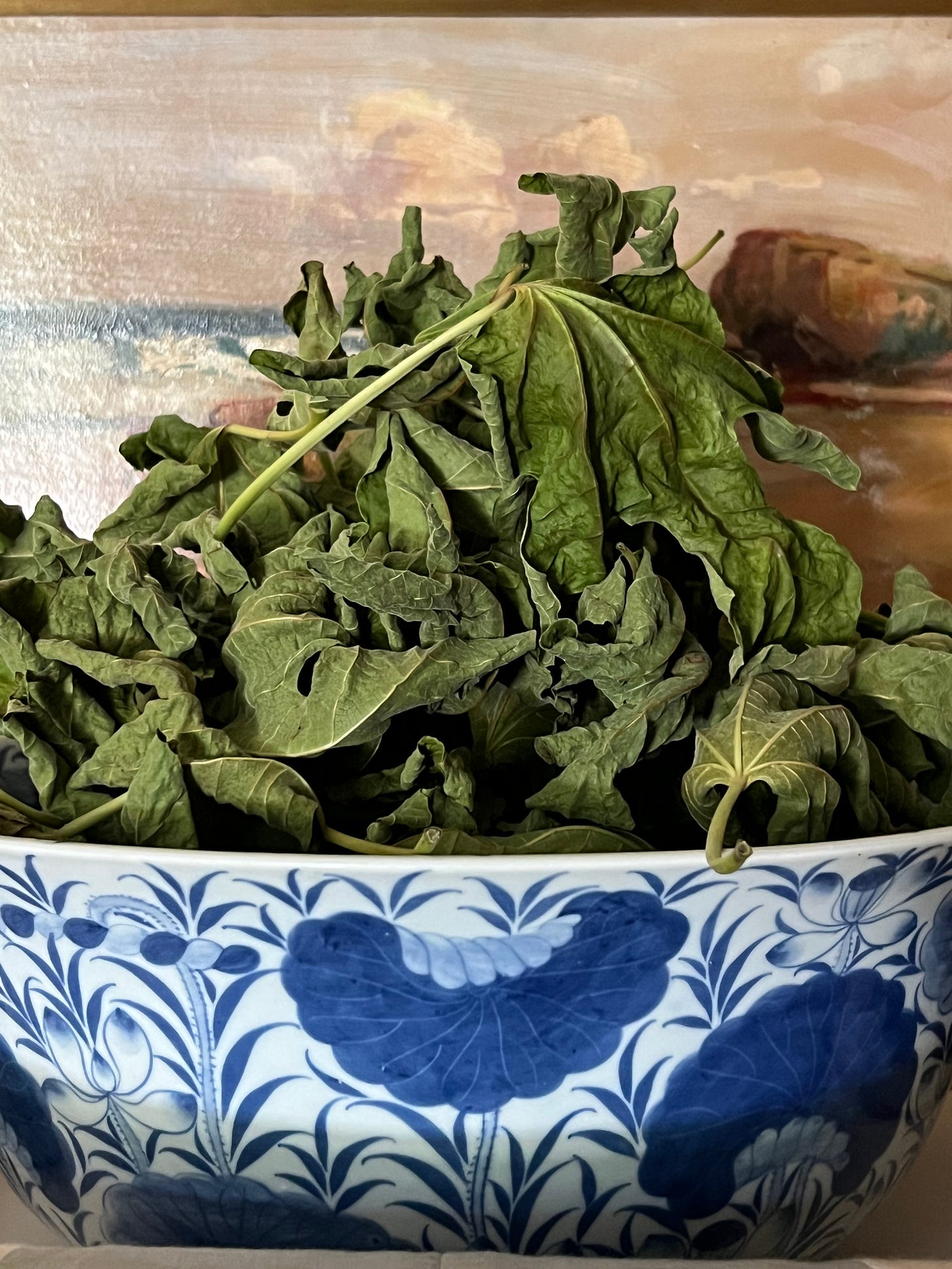
There’s been another peculiar and peripheral outlier on my radar this week! In last week’s post I omitted to note in the ‘picking for the house’ or ‘perfumes and aromas’ section at the bottom, that when I pruned the fig trees I collected the very best stems for a huge vase that sat all week long on the kitchen bench - a lovely full and handsome sight with an aroma that became distinctively more pronounced as the days went by. Visually though, the leaves began to lose their vigour, then quickly began to crinkle and drop. Aware my few ‘dried’ fig leaves from last year had been gathering dust on my desktop, I thought to put the vase out of sight and allowed the leaves to drop onto a sheet of newspaper spread out on the dining room table. I don’t usually dry or keep so many, but their deep, sweet figgy aroma is mesmerising. Although there are plenty of fresh leaves growing and that hint of figginess will soon be infiltrating the air all summer and autumn long around the orchard and Hayshed, I didn’t want to lose the beauties I’d brought inside and now they’re filling a big blue and white bowl behind the sofa in the Sitting Room.
Crinkly leaves though, bring me to the thought which I had intended to lead with today (before the suggestion of coming heat and hydrangeas sped to the fore!).

As I carried out yesterday’s distillation I was mulling over all the recent highly active perfumes and aromas the garden has yielded. But not all are ‘visible’; and the title I had been contemplating for this post was ‘the ghost of plants long passed’. Last week I mentioned I’d heavily pruned the Cistus ladanifer and that I reckoned it would be some time before that deep, resinous aroma permeated the air once more. But how very wrong I was! For all the ground beneath where its branches had spread, is littered with a quite thick layer of dried leaves decaying around the base of the plant, and as they do, they are not going quietly. If anything, the labdanum odour is more intense in the atmosphere than ever!
Which brought me to a comment made by one of my lovely participants at the Field of Flowers Workshop a few weeks ago, when that day began with a gentle misty rain. It was a comment I’ve heard so many times over the years, expressed one way or another but it’s always along the lines of ‘where’s the Curry plant’? I hadn’t walked to the end of the Borders that morning, I’d been preoccupied with preparation. But as all participants who arrive here do, Em had walked through the Hayshed and hovered at the end of the Borders before heading towards the Dairy. All I could do was smile. I knew exactly what she was referring to. Although the plant itself ‘gave up the ghost’ perhaps fifteen or more years ago…when the weather is just right, its essence still lingers in the air, which is a peculiar thing. As a general rule between all our senses, we can eventually trace an olfactory lead back to its source. But not in this case…it’s but a hint, though a strong one, a compelling memory of a plant that was once was.
The weekend saw me working like a mad woman - there was oh so much to do! For all I told you about the ‘wild side’ last week, something had to be done and yet…I didn’t want to lose the atmosphere - or the insect-attracting companions or likely seed to self-sow. Not for the first time, it struck me just how much material one can remove at this time of year, creating space, lightening the load, allowing light and air to infiltrate…without the guild side of the kitchen garden looking like anything has changed at all!
And so I took seemingly mountains to the compost on Saturday, then spent much of Sunday sieving barrow after barrow load of compost, working on little pockets at a time on the guild side of the garden. I built new frames, tied new wigwams, planted out tomatoes to a point I’m not sure I have anywhere for the remaining ones to go! And now I can clearly see where I have yet to add compost or make decisions about what happens in the blanks.
And I sowed more seed. Some of the first sowings either haven’t germinated or…are under attack. One must be so vigilant at this fragile stage of the season. In fact, most of the corn has germinated, but the next batch in my successional plan needed to go in. Most of my bean seed too, had germinated but…horror of horrors, they were sustaining a heavy attack by wood slaters! And not for the first time but this was intense - the weather? Who knows? But wood slaters are attracted by anything that’s dry or decaying and emerging bean seeds are such an attraction to them because as they germinate, beans are inclined to ‘wear’ their outer shell, almost as a hat. And that spent shell, attracts wood slaters. Once one arrives, they seem to put a call-out to all their mates and once they’re done eating the old shell, they just keep going…taking to the fresh new stem too, that’s trying so hard to grow. Before you know it…there’s nothing left but a mound of wood slaters crawling all over each other. So what to do? Coffee grounds…spread coffee grounds in a circle around the emerging bean seed at the first hint of soil eruption! If you just happen to be standing by…which of course is unlikely…but as soon as you do notice. Next (at least here) if you are lucky enough to get the beans to the two leaf stage and looking strong, is bean enemy number two: the Bower Bird. Now…I’m trying to fend them off with wire cylinders or net to each wig wam. Truly…all in the name of visual beauty and our food!
Today I’ll leave you with a teaser of the next post’s recipe! This wasn’t on today’s agenda either, but this morning I just had to make a start…at least to pick, prep and begin what will be several days in the making!
Sadly I’m not sure there will be a post next week as I have our final event of the year on Friday, with Richard and Matilda Dumas coming to regale us with tales of their year’s Sailing on El Oro. What pure escapism that will be: a chance encounter with an old family friend, the offer to borrow a 70’ ketch and the ensuing adventure that took them from the East Coast of America to the Caribbean, across the Atlantic and through the Mediterranean…all the way to Ithaca. Til has since painted a series of enchanting oil paintings of all manner of boats and seascapes and Richard has written a book ‘A Year on El Oro’. We’ll see and hear and no doubt laugh and wimper at some of their exploits. I’ve yet to dream up a menu for a lunch that will be both inspired by Til’s onboard catering for a constant crew and what the kitchen garden may provide. So next week I’ll be moving the furniture, cooking, hanging paintings, checking the projector and all that stuff that you know I do before an event! And on Friday…I’ll be ensconced in the moment!
So I send you wishes for the fortnight ahead, by which time there should be a great deal of action to report in the kitchen garden and who knows what other excitements in store! I really can only do one day at a time!
Enjoy this weekend. Mickey x
Productive garden notes:
Eating from the garden:
Lemons (stored now rather than on the tree!), rhubarb, mulberry (just!). Beetroot, parsnip, asparagus. Coloured chard, warrigal greens, lettuce. Fennel fronds, mint, rosemary, thyme, chives, first sprigs of lovage. Nasturtium petals (going) and chive flowers. Fresh fennel seed and fennel pollen (new) and micro rocket leaves that are just emerging from a seed flinging. Tiny cucumber flowers - I’m inclined to pick them off ‘til the vine grows as I want the strength in the vine and those flowers with tiny fruit attached are delicious.
And…the dried Speckled Cranberry Borlotti Beans!
Going / gone: lemons (plenty in store though), mulberry, cape gooseberry, leeks, calendula, borage and nasturtium petals
Seed saving: peony poppy, rocket, mustard leaf, radish
Sowing: beetroot, parsnip, carrot, beans, corn, zucchini, cucumber, watermelon, rockmelon, rocket, parsley, basil, sunflower and zinnia.
Planting: lettuce, tomatoes, aubergines, capsicums, cucumbers and zucchini seedlings
Ornamental garden notes:
Picking for the house: Burmese honeysuckle, (should have included Fig leaves last week) roses
Perfumes and aromas: Burmese honeysuckle, *Japanese honeysuckle, Crinum lily, Buddleja and Chinese star jasmine
*the commonly found honeysuckle is referred to as a noxious weed in many parts but I struggle to grow it here at all and delight in its growth over the old cubby house
Pruning and other: Thalia finished pruning the indigenous row in the field and added compost and mulch to the bed of agapanthus (coming into bud) at the back gate. The kitchen garden was my focus last weekend and though I’m not done there, or down the back, this weekend I’m keen to cut back a lot of the rose geranium in the field.

